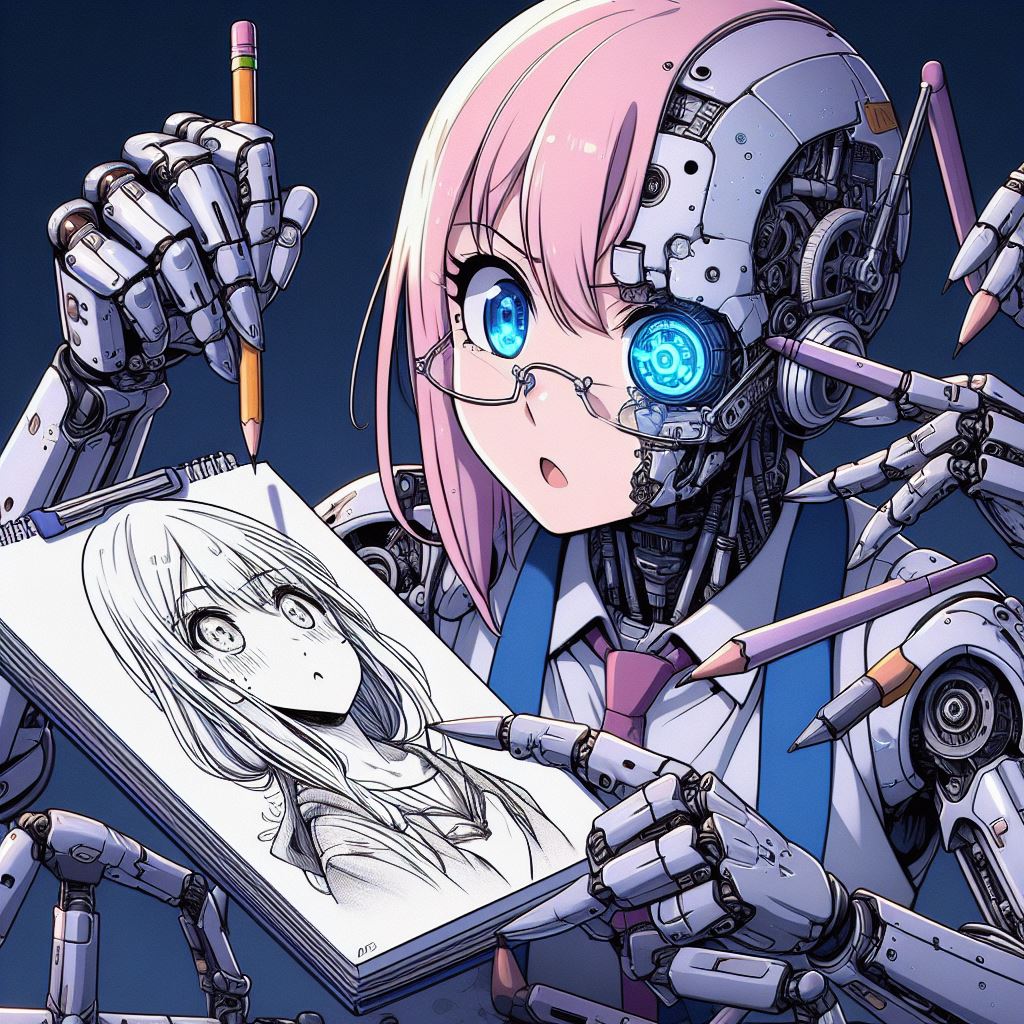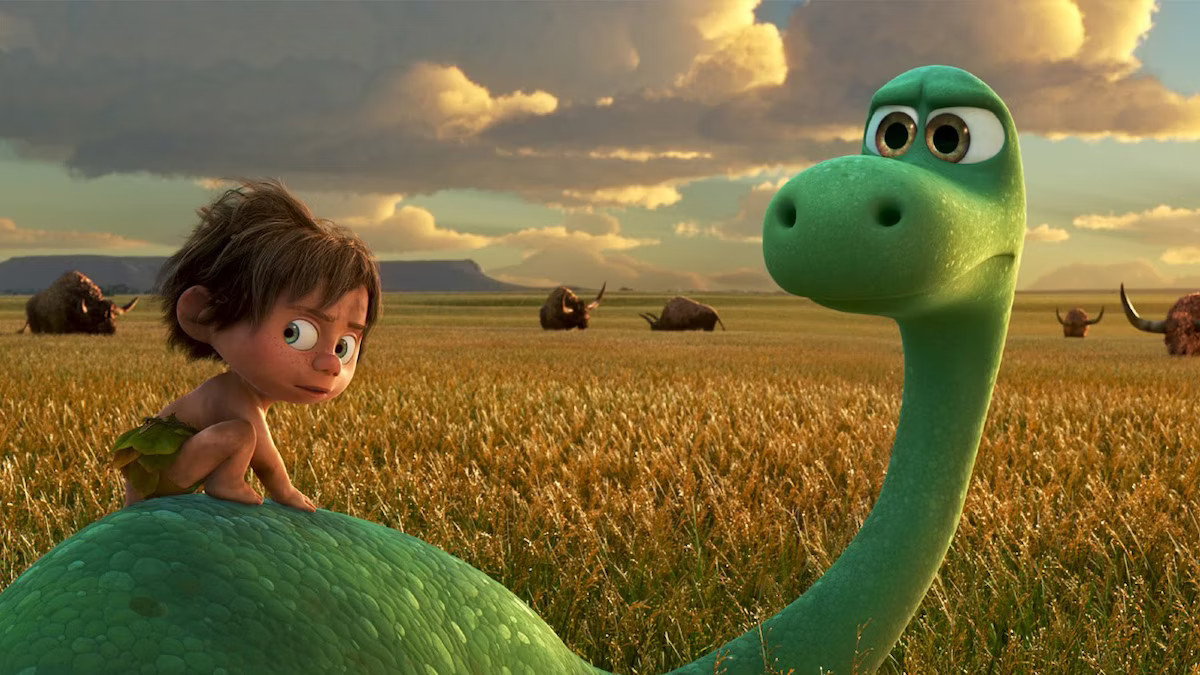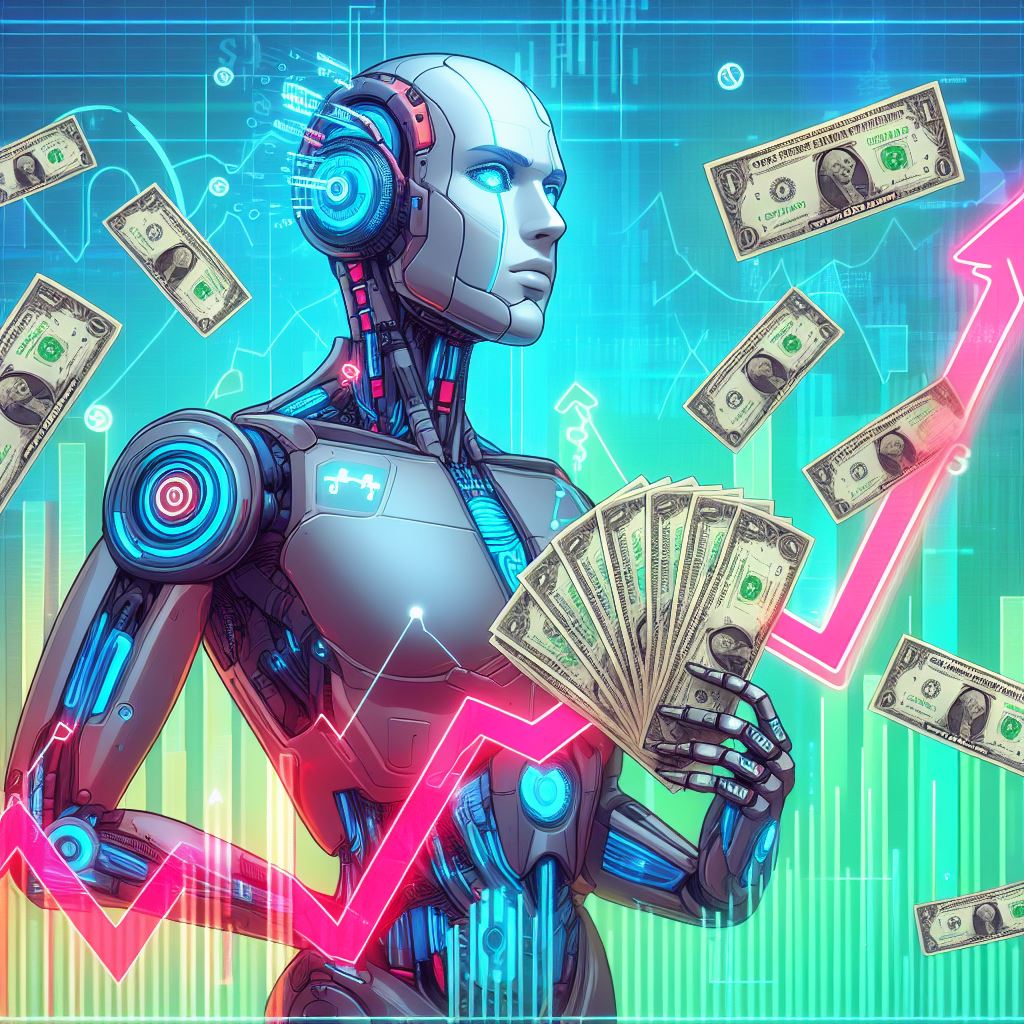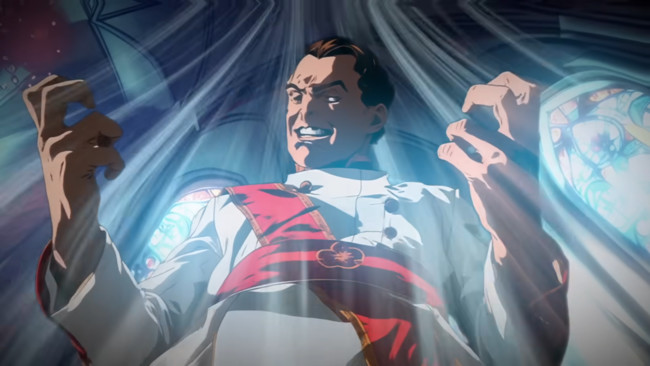Japanese Anime Studio Will Hire Talented AI for Drawing Animations
AI Enters the World of Creativity


AI in Creative Industries
Artificial intelligence has revolutionized how we perceive and create art. Its applications in the creative industry are as diverse as the artistic fields themselves, from music and literature to visual arts. In music, AI assists in composing pieces by analyzing patterns and styles of specific music, allowing for the creation of new, innovative compositions. In literature, AI-based tools like GPT-3 are used for generating advice, conversations, and even novels. In visual arts, AI enables the creation of unique artworks, often unseen in traditional methods, opening entirely new horizons for artists and creators.


 AI at Work in Major Studios
AI at Work in Major Studios
The digital era and technological advancements have revolutionized how Japanese anime studios approach production. Artificial intelligence, becoming increasingly advanced, has started to play a key role in animation creation. Many renowned anime studios have begun experimenting with AI to streamline the production process, improve visual quality, and reduce the time-consuming nature of the work. This approach not only increases efficiency but also opens new artistic and technical possibilities. Below are examples of specific AI applications in well-known anime projects.
 Toei Animation and "One Piece"
Toei Animation and "One Piece"
One of the most significant examples of AI use is in the popular series "One Piece" by Toei Animation. Known for innovation, Toei used AI to generate backgrounds and environments, which allowed for an increase in production speed while maintaining high graphical quality. In selected episodes, AI was utilized to create dynamic maritime sceneries and crowded ports, traditionally requiring hours of manual work. Thanks to AI, details such as ocean waves and crowd scenes in the background gained realism and fluidity, enhancing the sense of immersion. However, some fans expressed concern that excessive reliance on AI might reduce the individual character and "soul" of the drawing, a hallmark of traditional anime.
 Studio Ghibli and "Spirited Away 2.0"
Studio Ghibli and "Spirited Away 2.0"
Studio Ghibli, known for hand-drawn animations and deep storytelling, also attempted to integrate AI into its production, particularly in the project "Spirited Away 2.0". In this endeavor, AI was used for digitizing and enhancing old drawings, allowing the studio to refresh its classics while retaining their original charm. AI aided in the coloring process and adding background details, increasing work efficiency and achieving a new level of detail and realism in classic scenes. Despite concerns that technology might disrupt the artistic character of the work, the final result was well received by fans, who appreciated the subtle improvements and preservation of the original spirit of the work.
 Sunrise and "Gundam"
Sunrise and "Gundam"
Sunrise Studio, famous for the "Gundam" series, also leveraged the benefits of AI in its latest projects. They used an AI program named "MechaGen," specifically designed to automate the process of designing complex mechanical units and robots, a hallmark of the series. "MechaGen" allowed for faster creation of realistic mecha models that impressed with their detail and accuracy, while maintaining Sunrise's distinctive style. Although the use of AI in creating mecha was met with some skepticism among fans, the final effect was positively evaluated for its innovation and quality of execution.
 A-1 Pictures and "Sword Art Online"
A-1 Pictures and "Sword Art Online"
A-1 Pictures, creators of the popular "Sword Art Online" series, implemented an AI named "FantasyScape" for creating rich and complex virtual worlds, a key element of the series. "FantasyScape" enabled rapid generation of diverse sceneries, from vast cities to mysterious forests, maintaining a high level of detail and coloration. This allowed the studio to experiment with more complex and dynamic scenes, saving time and resources. The use of "FantasyScape" was a step forward in creating virtual worlds, combining AI technologies with the artistic vision of the creators.
 Wit Studio and "Attack on Titan"
Wit Studio and "Attack on Titan"
Wit Studio, known for productions like "Attack on Titan," used an AI program called "TitanCraft" to optimize the animation process of the titular titans. "TitanCraft" assisted in generating realistic movements and expressions for the titans, maintaining the detail and intensity characteristic of the series. The use of AI enabled the creation of smoother and more convincing fight scenes, while reducing the workload for animators. The reception of "TitanCraft" among fans was mixed; while many appreciated the new level of dynamism and realism in the animation, some longed for a more traditional approach to character animation.
 Bones and "My Hero Academia"
Bones and "My Hero Academia"
Studio Bones, responsible for the "My Hero Academia" series, utilized an AI known as "HeroMotion" to enhance dynamic fight scenes. "HeroMotion," specifically tailored to the needs of the series, enabled the creation of more fluid and realistic character movements, as well as impressive action scenes. The program helped animators in generating complex animations, which would otherwise require many hours of manual work. Thanks to "HeroMotion," the fight scenes gained in intensity and fluidity, which was very well received by fans, valuing the series for its energetic and exciting sequences.
 Shaft and "Monogatari Series"
Shaft and "Monogatari Series"
Studio Shaft, known for the "Monogatari" series, used an AI program named "SceneWeaver" to create unique and surreal backgrounds, a hallmark of the series. "SceneWeaver" allowed for experimenting with various artistic styles and visuals, creating sceneries that would have been difficult or time-consuming to create manually. The use of "SceneWeaver" introduced a new depth and creativity to the project, allowing Shaft to explore new artistic horizons without needing to commit significant resources to production.

Ufotable, the studio behind "Demon Slayer," utilized advanced AI "DemonArt" to create detailed and sophisticated visual effects, which are key to the visual style of the series. "DemonArt" specialized in generating complex animation effects of water and fire, characteristic of the battles in "Demon Slayer." This allowed the studio to achieve an unmatched level of detail and realism in its animations, significantly raising the bar for visual effects in anime. The use of "DemonArt" was met with enthusiastic reception among fans, who appreciated the unique quality and aesthetics presented in the series.
 Other Renowned Studios and Their Projects
Other Renowned Studios and Their Projects
Other Japanese anime studios also began to explore the possibilities offered by AI. For example, Kyoto Animation used AI to create realistic lighting and shadow effects in its recent productions, adding depth and realism to their animations. Madhouse, known for dynamic and detailed action scenes, applied AI to generate fluid and complex motion sequences, while maintaining the unique artistic style of the studio. Each of these AI applications demonstrates how technology can support and enhance traditional animation methods, opening new horizons for creators and fans of anime.
Benefits and Challenges


Doubts
 "Anime Rock, Paper, Scissors" and Community Response
"Anime Rock, Paper, Scissors" and Community Response
One of the most controversial cases of AI use in anime production is the short film "Anime Rock, Paper, Scissors" created by Corridor Digital. The film, utilizing AI technology to generate backgrounds and characters, elicited mixed reactions. On one hand, the technical proficiency and innovative application of AI were admired, but on the other hand, many critics and anime fans raised concerns about authenticity and originality. The criticism focused on the notion that AI might lead to content perceived as lacking the "soul" and individual style, which is so valued in traditional Japanese animation.
 Copyright and Originality
Copyright and Originality
The issue of copyright and originality in AI-generated anime is another area of controversy. The introduction of AI, which can mimic the drawing styles of known anime creators or reproduce existing works, raises questions about copyright infringement and creative ethics. For example, in the case of "Anime Rock, Paper, Scissors," there was discussion about the extent to which AI should be used to create works based on existing art from other artists, without infringing on their intellectual rights. This sparks a discussion about the boundaries that should be maintained between inspiration and plagiarism in the digital era, especially in the context of protecting the creative work of artists and the originality of their pieces.
Changing Paradigm in Animation
The controversy surrounding AI also pertains to the broader changing paradigm in the animation industry. While some studios and creators adopt AI as a supporting tool, other sectors of the anime community fear that excessive reliance on AI could lead to a gradual erosion of skills and techniques of traditional animation. This debate highlights not only the technological and ethical aspects of AI use but also the impact it may have on the future of the anime industry as a whole, in terms of preserving its unique heritage and cultural identity.
The Future of AI in Anime
 The future of artificial intelligence in anime production appears promising and full of potential. Experts predict that AI will continue its development, offering even more advanced tools that can support anime creators in more complex and creative tasks. We can expect that AI will not only streamline existing processes, such as coloring and character animation, but also become a tool assisting in more subtle aspects of production, such as narrative development and character design. Moreover, there is a possibility that AI will be used to create entirely new styles and techniques of animation, potentially opening new horizons for the anime genre.
The future of artificial intelligence in anime production appears promising and full of potential. Experts predict that AI will continue its development, offering even more advanced tools that can support anime creators in more complex and creative tasks. We can expect that AI will not only streamline existing processes, such as coloring and character animation, but also become a tool assisting in more subtle aspects of production, such as narrative development and character design. Moreover, there is a possibility that AI will be used to create entirely new styles and techniques of animation, potentially opening new horizons for the anime genre.
In the context of future productions, experts speculate that AI will play the role of a co-creator, supporting animators and directors in realizing their artistic visions. Instead of replacing human skills, AI has the potential to become a tool that allows creators to achieve greater artistic depth and technical refinement. However, in this evolution, it will be important to maintain a balance between technological innovation and the art of traditional animation. The future of AI in anime will depend on how the industry approaches these new possibilities - whether they will be used to enrich and expand the boundaries of anime, or if they will dominate and start limiting the creativity and originality that are key to this medium.
See also:
Nico Nico Douga: Japan's Answer to YouTube
Beyond the Horizon of Reality: Virtual Universes in Manga and Anime
"Strong Japanese Women"
see book by the author
of the page
未開 ソビエライ
An enthusiast of Asian culture with a deep appreciation for the diverse philosophies of the world. By education, a psychologist and philologist specializing in Korean studies. At heart, a programmer (primarily for Android) and a passionate technology enthusiast, as well as a practitioner of Zen and mono no aware. In moments of tranquility, adheres to a disciplined lifestyle, firmly believing that perseverance, continuous personal growth, and dedication to one's passions are the wisest paths in life. Author of the book "Strong Women of Japan" (>>see more)
Personal motto:
"The most powerful force in the universe is compound interest." - Albert Einstein (probably)
Mike Soray
(aka Michał Sobieraj)
未開 ソビエライ
An enthusiast of Asian culture with a deep appreciation for the diverse philosophies of the world. By education, a psychologist and philologist specializing in Korean studies. At heart, a programmer (primarily for Android) and a passionate technology enthusiast, as well as a practitioner of Zen and mono no aware. In moments of tranquility, adheres to a disciplined lifestyle, firmly believing that perseverance, continuous personal growth, and dedication to one's passions are the wisest paths in life. Author of the book "Strong Women of Japan" (>>see more)
Personal motto:
"The most powerful force in the universe is compound interest." - Albert Einstein (probably)
Mike Soray
(aka Michał Sobieraj)
Write us...
Ciechanów, Polska
dr.imyon@gmail.com
___________________
inari.smart
Would you like to share your thoughts or feedback about our website or app? Leave us a message, and we’ll get back to you quickly. We value your perspective!
 AI at Work in Major Studios
AI at Work in Major Studios Toei Animation and "One Piece"
Toei Animation and "One Piece" Studio Ghibli and "Spirited Away 2.0"
Studio Ghibli and "Spirited Away 2.0" Sunrise and "Gundam"
Sunrise and "Gundam" A-1 Pictures and "Sword Art Online"
A-1 Pictures and "Sword Art Online" Wit Studio and "Attack on Titan"
Wit Studio and "Attack on Titan" Bones and "My Hero Academia"
Bones and "My Hero Academia" Shaft and "Monogatari Series"
Shaft and "Monogatari Series" Other Renowned Studios and Their Projects
Other Renowned Studios and Their Projects "Anime Rock, Paper, Scissors" and Community Response
"Anime Rock, Paper, Scissors" and Community Response Copyright and Originality
Copyright and Originality The future of artificial intelligence in anime production appears promising and full of potential. Experts predict that AI will continue its development, offering even more advanced tools that can support anime creators in more complex and creative tasks. We can expect that AI will not only streamline existing processes, such as coloring and character animation, but also become a tool assisting in more subtle aspects of production, such as narrative development and character design. Moreover, there is a possibility that AI will be used to create entirely new styles and techniques of animation, potentially opening new horizons for the anime genre.
The future of artificial intelligence in anime production appears promising and full of potential. Experts predict that AI will continue its development, offering even more advanced tools that can support anime creators in more complex and creative tasks. We can expect that AI will not only streamline existing processes, such as coloring and character animation, but also become a tool assisting in more subtle aspects of production, such as narrative development and character design. Moreover, there is a possibility that AI will be used to create entirely new styles and techniques of animation, potentially opening new horizons for the anime genre.

